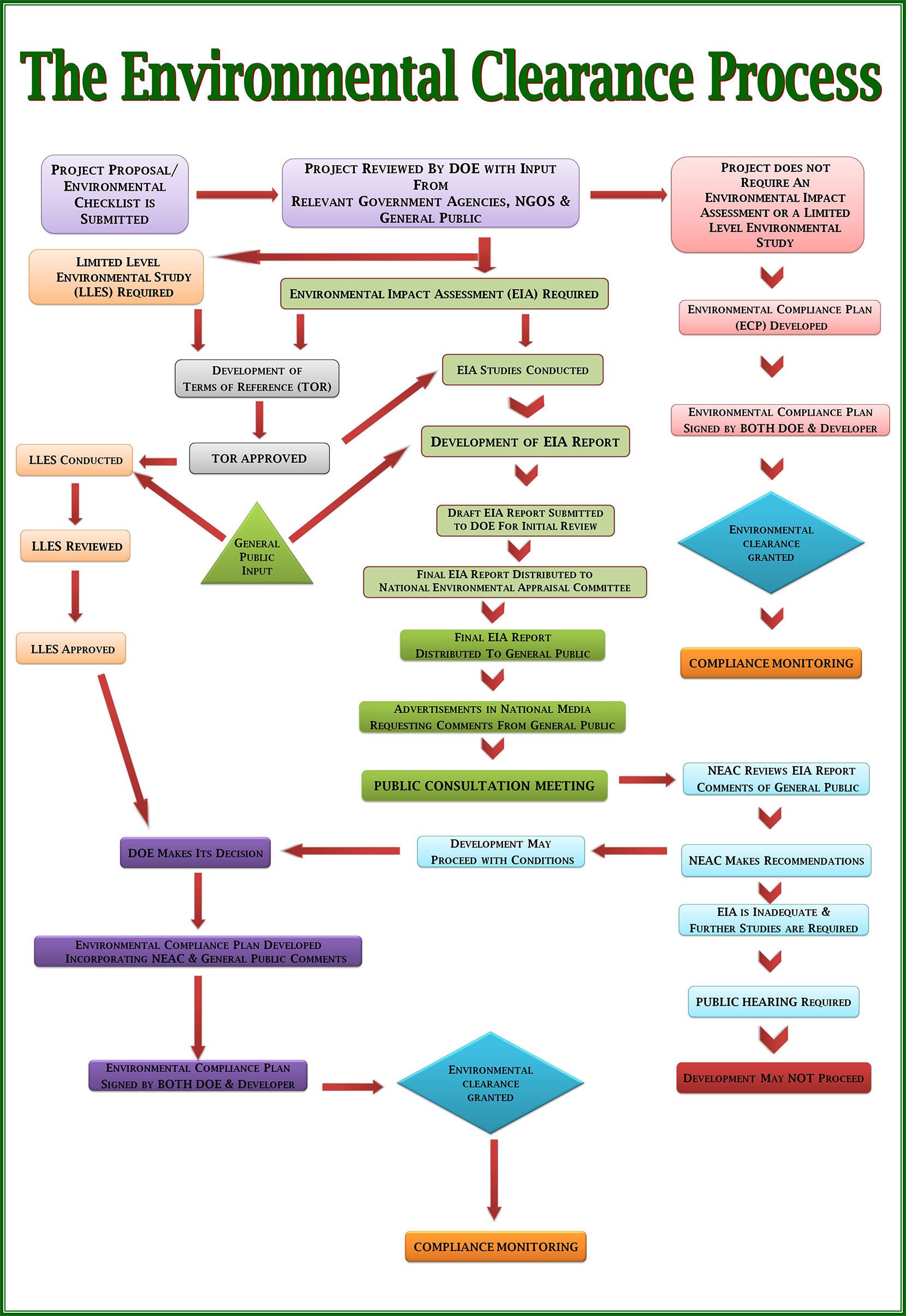The Department of the Environment issues Environmental Clearance to projects and activities though an environmental screening process. These projects are placed into two main categories: those projects which are not required to carry out an Environmental Impact Assessment (EIA) or Limited Level Environmental Study (LLES) and those that are required to do so. In both instances, however, environmental clearances are issued on the basis of an Environmental Compliance Plan (ECP), which outlines specific terms and conditions upon which environmental clearance is being granted. The Department institutes a non-reimbursable processing fee for the screening of both categories of projects. The Environmental Impact Assessment Regulations, 1995 states: “Any persons, agencies, institutions (whether public or private), unless exempted pursuant to these Regulations, shall, before embarking on a propose project or activity, apply to the Department for a determination whether such project or activity would require an environmental impact assessment” In addition, Regulation 22A (2) of the Environmental Impact Assessment (Amendment) Regulations, 2007 emphasize that: “The Developer shall, notwithstanding any other legal obligation, not proceed with the undertaking, project, programme or activity until and unless the Developer has signed an environmental compliance plan and received environmental clearance from the Department” Furthermore, Section 9 of the Environmental Protection (Amendment) Act, 2009 states that: “Every person who fails to carry out an environmental impact assessment or any conditions imposed by the Department or fails to execute its Environmental Compliance Plan as required under this Act or any regulations made thereunder, commits an offense and shall be liable on summary conviction to a fine of not less than fifty thousand dollars and not exceeding one hundred thousand dollars or to imprisonment for a term not exceeding two years or to both such fine and imprisonment”
Understanding the EIA Process
Environmental Clearance Process Overview
- Environmental Checklists (purpose and activities of projects)
- Screening of Projects (EIA/LLES/No Study)
- Projects not requiring studies – site inspection (scoping) – ECP – monitoring
- Projects requiring EIA/LLES – site inspection (scoping) – TOR – Preparation of study – Public Consultation – NEAC site inspection – NEAC Meeting – ECP –monitoring
Environmental Impact Assessments
An Environmental Impact Assessment, otherwise called an EIA, is a planning tool that promotes environmentally sound development practices. It examines both the adverse and beneficial environmental consequences of a project design on human health and the natural and cultural environment, and ensures the development of mitigative measures to address these consequences during project development.
An EIA uses the preventative approach versus the reactive approach and also considers alternative project designs; that is why it is so important for project developers to contact the Department of the Environment to begin the process before carrying out any construction activities.
The environmental legislation of Belize requires that any project or activity which may have significant impact on the environment may be required to carry out an EIA and following the rules as set out in the Environmental Impact Assessment Regulations and its Amendment of 2007.
Below are the EIAs that have been submitted to the Department of the Environment since 2010 and either have gone through or are going through the Environmental Impact Assessment Process.

